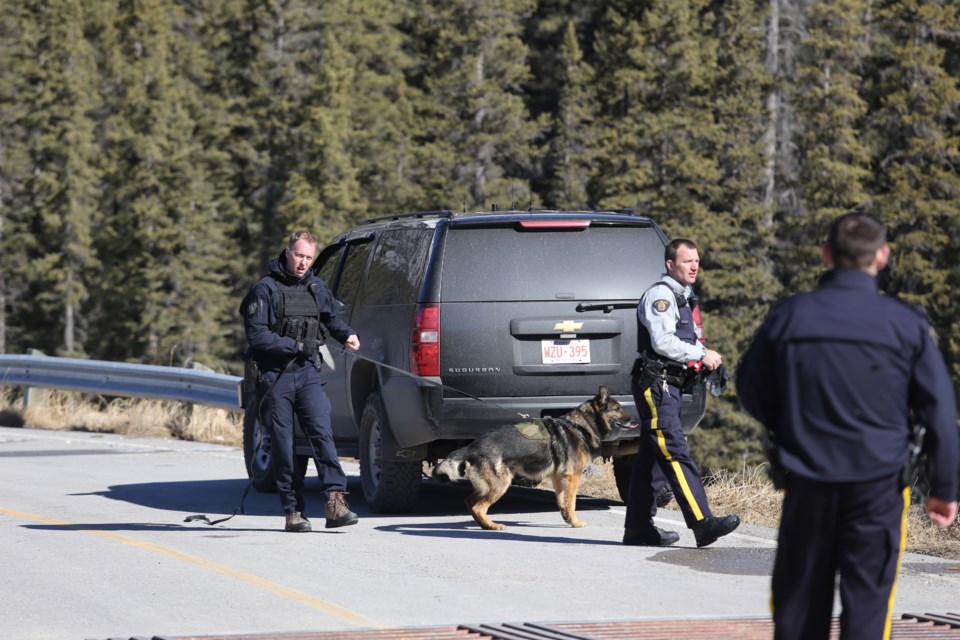BIGHORN – Changes to how rural policing is funded across Alberta will soon cost MD of Bighorn taxpayers more each year.
Elected officials have been left with uncertainty around the 2020 MD of Bighorn operational budget, following the UCP government's recent announcement it will increase police staffing numbers across the province over the next three years.
However, the increased staffing is combined with a change to the funding model for policing within rural communities, which has historically been a zero per cent contribution from those smaller municipalities.
Small and rural communities are now being asked to contribute 10 per cent to policing costs in 2020, bumping up to 30 per cent by 2023. For Bighorn that means an estimated of $66,850 of additional costs next year, increasing to more than $200,000 by 2023.
“Those are significant amounts in our budget,” said MD of Bighorn Reeve Dene Cooper. “They are not easy to budget for and it is not a cost that we’ve borne in the past. It’s a new deliverable, they are putting new boots on the ground and they are attaching an invoice to it – I don't know how it is going to work out.”
While the Bighorn budget was recently approved at the December council meeting, officials acknowledged there will likely be a re-adjustment when the municipality knows the official contribution numbers.
“When those costs come in, we will have to open the budget and change the cost,” Cooper said during the Dec. 10 meeting.
Director of Finance Shaina Tutt agreed, while noting any estimates were speculation.
“We don't do budgets on speculation,” Tutt added.
Historically, communities with populations under 5,000 did not have to contribute to policing costs in Alberta. But with the provincial government announcing an increase of 300 RCMP officers over the next three years, in addition to members for specialized RCMP units and civilian positions, small and rural communities, with some exceptions, will contribute toward those new positions: 10 per cent in 2020, 15 per cent in 2021, 20 per cent in 2022 and 30 per cent by 2023.
According to a provincial government press release, policing costs for each community will be determined by the municipal tax base, as measured by equalized assessment with communities also eligible for other subsidies.
With no police detachment located in any of the five communities within Bighorn, the MD relies on three RCMP detachments, primarily Canmore and Cochrane, to respond to calls within the 2,673 square-kilometre area.
“There certainly is a rural crime issue that needs to be addressed across the province of Alberta and policing is one of the factors that will be essential to finding a better outcome, [but] the costs are very high to the MD of Bighorn especially as they escalate,” Cooper said.
Bighorn CAO Rob Ellis said the MD is still waiting to hear from the provincial government on what the official numbers will be.
In the press release, officials said it is hoped that increased police staffing will help Albertans feel safe in their own homes.
“The funding model announced will allow the Alberta RCMP to put additional resources where they are needed most immediately – on the frontline in your detachments, protecting your backyards and your farmyards, pushing back crime in a sophisticated and focused manner,” RCMP Deputy Commissioner Curtis Zablocki said.
Rural Municipalities of Alberta president Al Kemmere said rural crime has been an ongoing issue in the province and rural municipalities recognize they need to share costs of the solutions to support safer communities.
“Absorbing additional policing costs will be a significant challenge for rural municipalities given the current economic environment and RMA continues to be concerned about the use of equalized assessment in the calculations of amounts paid, however a reduction in the weighting of equalized assessment based on consultation is appreciated,” Kemmere said.
“RMA is looking forward to participating on the Alberta Police Advisory Board to inform how additional funding will be reinvested to improve service standards to the rural and remote municipalities and how municipalities can have increased local input into monitoring the service deliverables as compared to cost increases.”
Earlier this year, the provincial government also announced expanding the role and authorities of 400 peace officers in the Fish and Wildlife Enforcement Branch, Commercial Vehicle Enforcement Branch and the traffic arm of the Alberta Sheriffs, enabling officers to respond to a wider range of calls and to assist RCMP and other police services in some emergencies following training in 2020 and increased maximum fines for trespassing.
Cooper acknowledged the need for safer communities and said he will wait to see the outcome.
“I realize that it is a program that is being expressed across Alberta, so I wait to see how satisfactory the outcome is."






